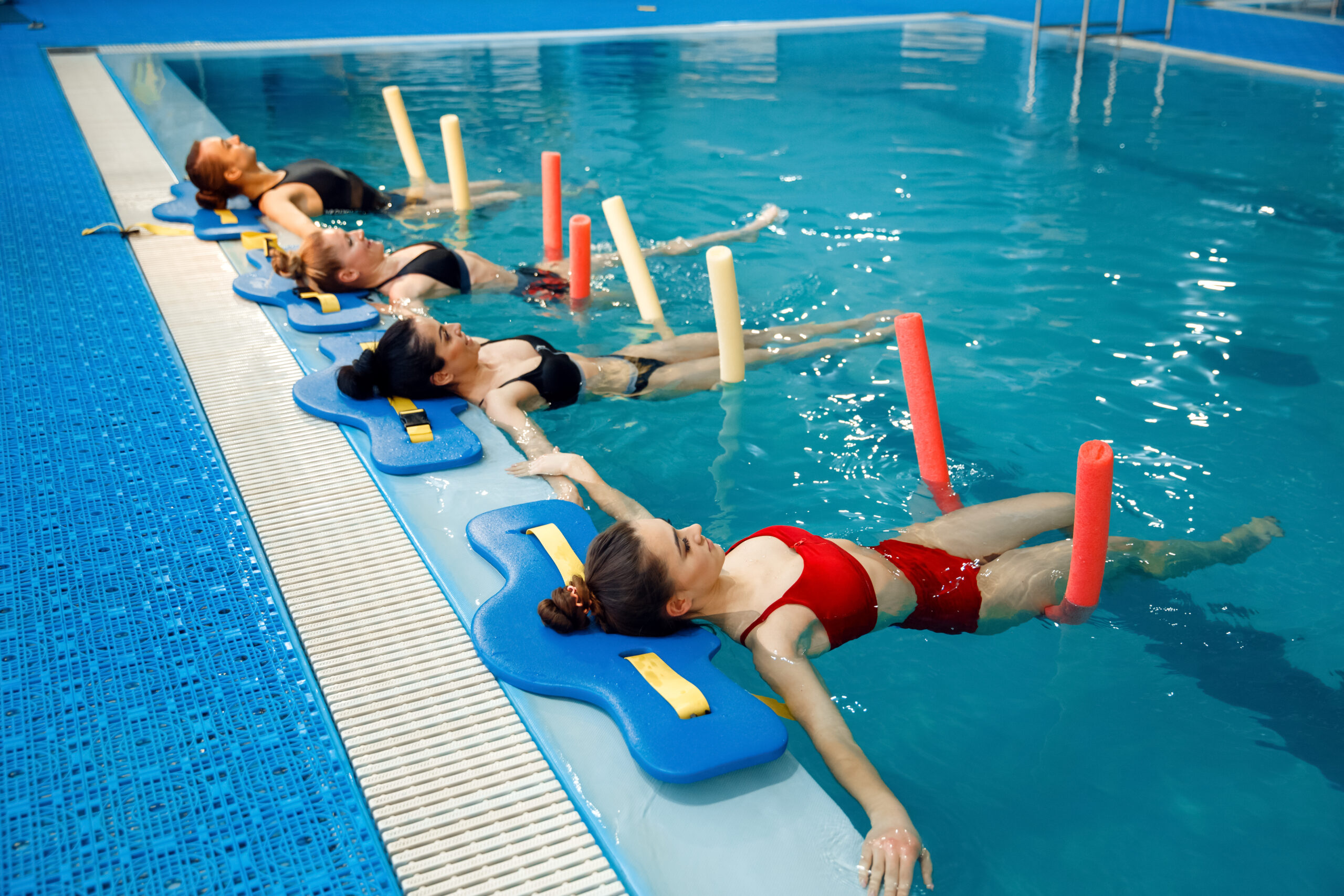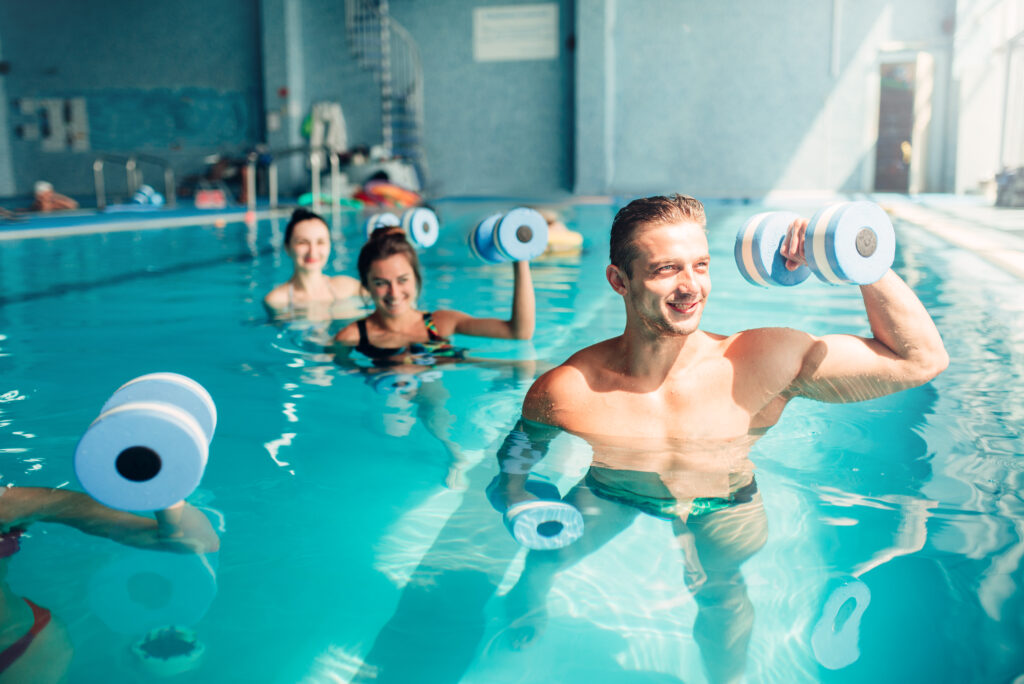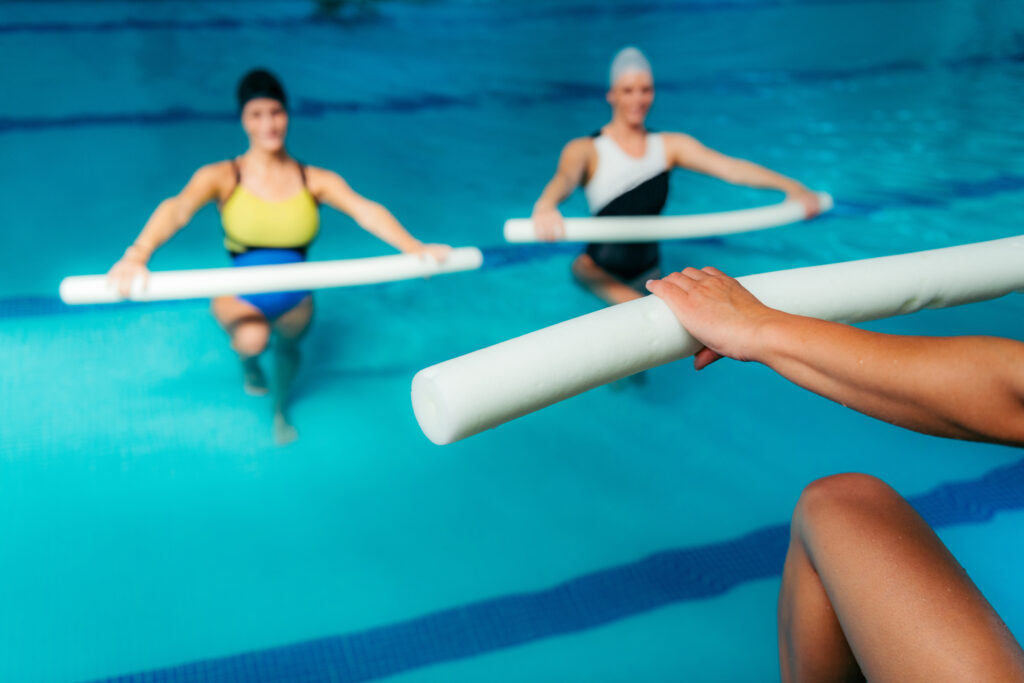
We can all picture our mom or grandmother as they cheerfully go off to their water aerobics class, towel draped over the shoulder, swimsuit and sandals on; already talking about the friends they will soon be joining in the pool.
Well, your mom is on to something that ANYONE can benefit from — water workouts. This simple form of exercise, with the unjustified reputation of being only for senior citizens, is an accessible and effective workout for just about anyone. And the best part? You do NOT need to know how to swim to take a water aerobics class!
The Benefits of Water Aerobics
Swimming or taking a water aerobics class provides the same benefits to your body; for example
- It engages (nearly) all your muscles and joints in a low-to-no impact way
- The water helps to cool your body, so you don’t overheat (and it washes the sweat away too!)
- Water supports half of your body weight, so you can exercise at a greater intensity without getting injured (or remove some of the pressure on existing injuries while you recover)
The reason older folks like their water aerobics classes is because, for them, it is a chance to move without pain. But it’s not just for people who have arthritis or have had joints replaced or strokes impacting their mobility. Anyone who has difficulty walking or dealing with the impact of “on-land” exercise can benefit – it’s also an excellent option for anyone looking to switch up their usual gym session too!
Even though water is a liquid, it provides excellent resistance to move against, resulting in a total body workout. Working out in water also puts less strain on the heart, enabling you to work out harder and for longer without raising your heart rate too high or increasing your blood pressure.
Are Water Workouts Effective?
A water workout can be a challenging resistance workout for anyone.
Both swimmers and people who are upright in the water create water turbulence, which is called eddy resistance. Competitive swimmers try not to create this as it slows down their times and makes their strokes less efficient, but exercisers in water aerobics classes want the resistance to work against to make the moves more challenging.
Numerous studies also demonstrate the effectiveness of balance training in water. Water workouts are a great way to improve balance as they eliminate the fear of falling or injury – the worst that may happen is that your hair gets wet!
Water Aerobics Exercises to Try
If you have a shallow pool, start in waist-deep water with your feet on the bottom.
The Water March
March in place, then run in place. Can you feel the difference when you try to move faster? To add some extra resistance, march or run while moving through the water.
Want to change the intensity? Add some arm movements in. With as much of your arms in the water as depth allows, try pushing them forward and backward and out to the sides.
Calisthenics
Many of the traditional calisthenics moves you’d do in the gym can be done in the pool, too, with the added bonus of being easier on the joints. Try jumping jacks, high kicks out to the front or side, touching a hand to the opposite foot, or a scissor move. These should all be strenuous in the water.
Want to change the intensity? Make your moves bigger for more impact or smaller for less impact. You can also hold things, such as a pool noodle or water weights.
The Pool Noodle Challenge
Pool noodles are a great way to improve core strength and balance. Try jumping over a noodle or standing on it and suspending yourself in the pool if it is deep enough.
You can do endless things in the water to get a good workout!
Water Aerobics For Injury Rehab & Joint Issues
If you are using the water to rehab from an injury or have joint pain or arthritis, you can easily modify a pool workout by taking it down to a lower intensity. Keep your movements at a walking pace, and your moves smooth and big instead of forceful and quick.
A water workout is an excellent option for all sorts of people, for all sorts of reasons, but whatever the reason, it will be fun! And a fun workout is one that you are likely to stick with!
Guest Author: Kim Evans, fitness specialist, and journalist, has been writing about fitness since she worked at a daily newspaper. Focusing on functional training, aquatic exercise, swimming, and working with different populations, Evans brings a wealth of experience to readers. She currently works as a personal trainer, instructor, and coordinator for a community-based fitness and aquatic center in Michigan. When she has free time, she can be found on her paddleboard, hiking with friends, or walking the sandy beaches of Lake Michigan.



